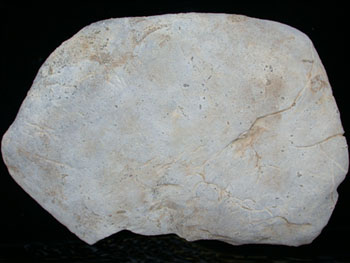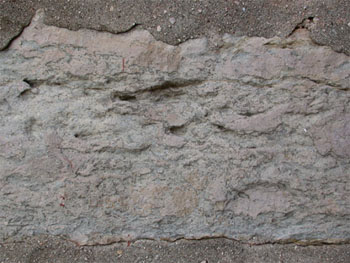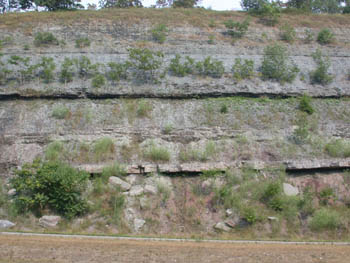Micrite (Microcrystalline Limestone)
| Many limestones are so fine-grained that you cannot see any individual grains. If you are lucky, you may find fossils or fossil debris.
Most marine micrites started as soft carbonate mud on the sea floor. Carbonate mud is much like regular mud, except that it is (at least in the Bahamas) almost white in color. In the Bahamas you can play in the mud and come out clean! The mud particles are generally thought to have originated with coralline algae. Coralline algae are little green crunchy plant-like organisms that using microscopic grains of calcium carbonate to give their tissues some support. When these plants die, the tissues rot and the tiny grains add to the local mud. Some micrites may have originated when calcium carbonate precipitated as tiny grains in the water column and settled to the sea floor.
|
|
Here is your basic micrite. This particular sample is from a limestone that formed in an ancient lake.
It formed from a soft lime mud originally made of tiny grains of CaCO3.
|

|
|
Many dolostones are micritic. Many were probably deposited as micritic limestones and were altered to dolostone after burial.
Click for an extra close close-up. It is clear that some original structures (animal burrows?) are preserved in this rock.
|

|
| Shales, mudstones, and limestones can all be fine-grained, which can make them tough for beginners to distinguish. In the field life is easier: Limestone is much more resistant to weathering. The lower prominent bed is a limestone unit that is shedding large blocks of rock. Everything else is shale, mudstone, or, in the case of the upper resistant bed, sandstone. |
|
|



